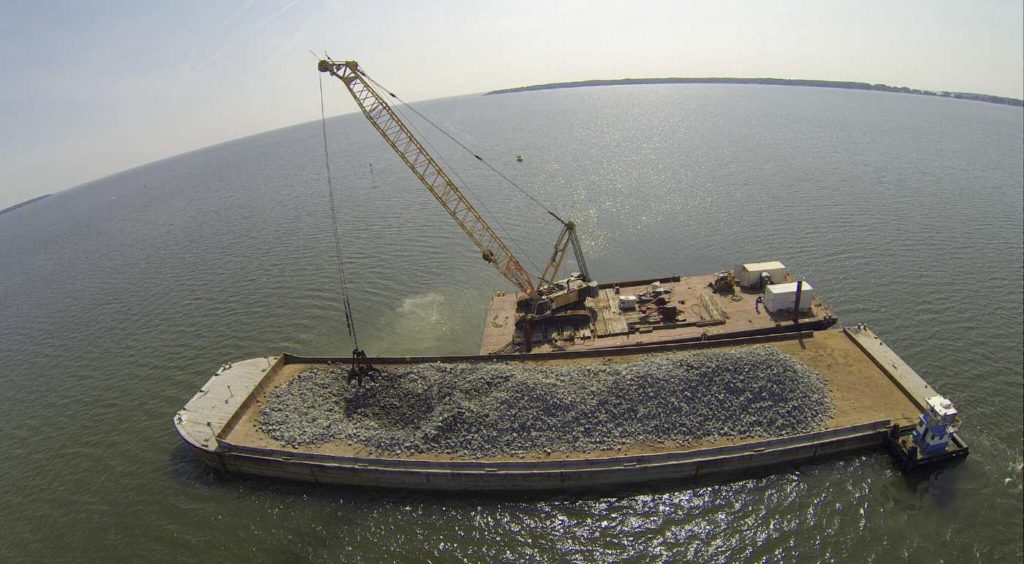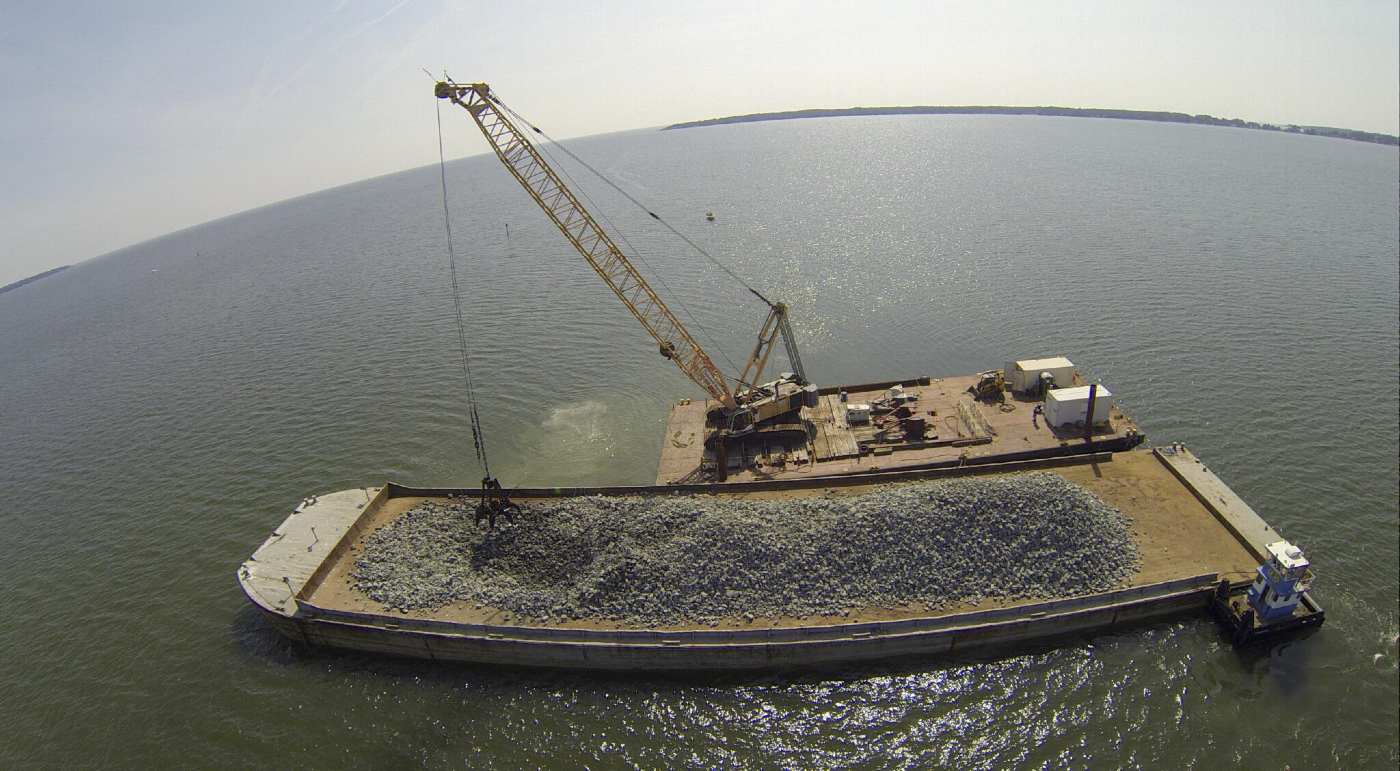
Biologists working to restore the Chesapeake Bay oyster populations are claiming the biggest success in human history, as whole reefs of oysters return to more than 400 acres of estuarine ecosystem.
Nowhere is this success more highlighted than along the Piankatank River, where The Nature Conservancy Virginia Chesapeake Bay Program has taken the first steps to restoring what used to be 7,000 acres of oyster reefs.
The Piankatank is what’s known as a “trap estuary,” where nutrient quality and calm waters mean oysters can flourish without their larvae being washed out into the bay. It’s just one of several major tributaries that flow into the bay which are experiencing a renaissance in oyster life.
To date, four of six out of Virginia’s major tributaries have met their oyster restoration goals. Director of the Conservancy’s bay program called it “the largest completed oyster restoration project on the planet” when he spoke to The Virginia Mercury.
“Water quality and fish is really what it boils down to,” said Director Andy Lacatell. “Oysters improve water quality, and they provide habitat for fish and crabs and other critters that are both recreationally and commercially important.”
In 2014, biological plummeting in the Chesapeake, the nation’s largest estuary, saw the six watershed states, the EPA, and the Chesapeake Bay Commission come together to form the Bay Watershed Agreement, which would aim to restore oyster populations in the 10 major feeder rivers by 2025.
MORE: Scientists Work to Turn the Tide of Oyster and Seagrass Decline in Chesapeake Bay, Often by Hand
In VA, the Great Wicomico, Piankatank, and Lafayette rivers have all been restored as per the plan, with only the Lynnhaven and lower York rivers remaining. State Governor Ralph Northam voluntarily added the Eastern Branch of the Elizabeth River to Virginia’s list last year.
The Virginia Marine Resources Commission has been responsible for most of the reef-building, which included 100 acres just last year. The Virginia Institute of Marine Sciences is also a major participant in oyster restoration, creating “oyster castles” in other rivers like the Rappahannock and the Elizabeth, and helping the bivalves reach the more advanced ages of 5-7 years—when the animal’s fecundity becomes greatest.
CHECK OUT: Mussels Can Help Filter Microplastics Out of Our Oceans Without Any Harm to the Molluscs
Experts believe that the methods currently being employed, such as using concrete debris to create the base for oysters to cling on to, and the rate at which reefs are being restored, will see the state meet its 2025 targets. That’s good news indeed.
POPULATE Those News Feeds With Reviving Stories Like This One…




















